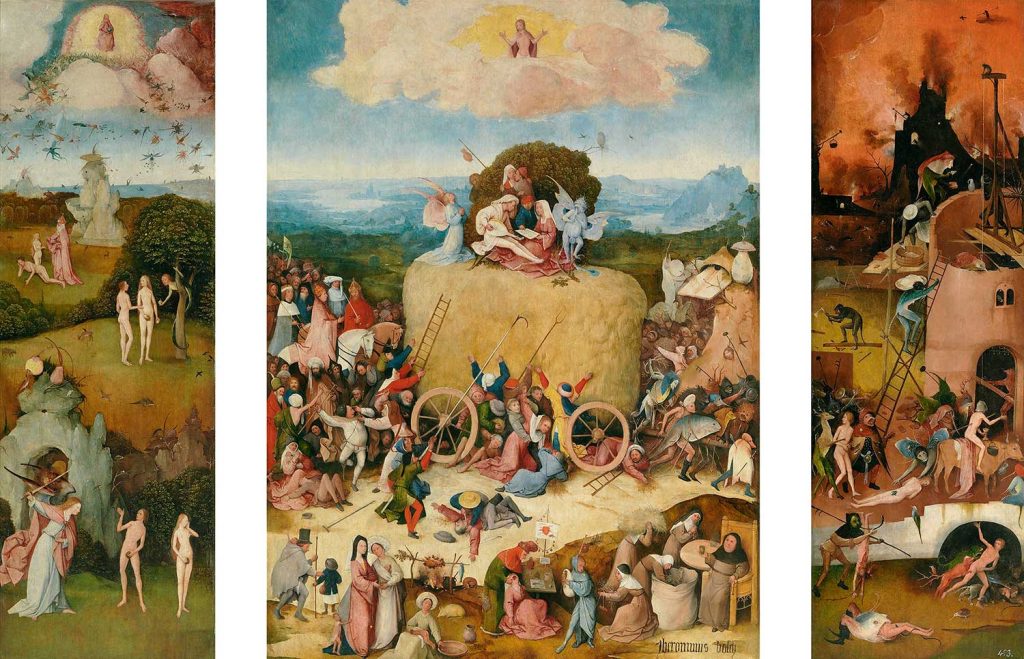
The Haywain Triptych by Hieronymus Bosch was created in 1512 – 1515. The painting is in Museo del Prado, Madrid. The size of the work is 147,1 x 224,3 cm and is made as an oil on panel.
The painting offers an exemplum of a different type to the ones commonly used at the time, in the sense that it is not a question of doing good but rather of avoiding evil and of adhering to this rule throughout life. In the closed triptych Bosch depicted the subject of the Pilgrimage of Life in full colour, rather than in grisaille or semi-grisaille as in the Rotterdam version of the subject. (Read more in Museo del Prado, Madrid)
About the Artist: Dutch painter Hieronymus Bosch was born in ‘s-Hertogenbosch. Little is known of Bosch’s life or training. Bosch lived all his life in and near ‘s-Hertogenbosch, which was located in the Duchy of Brabant. He became a popular painter in his lifetime and often received commissions from abroad. In the 20th century, when changing artistic tastes made artists like Bosch more palatable to the European imagination, it was sometimes argued that Bosch’s art was inspired by heretical points of view as well as by obscure hermetic practices. Read more
You can order this work as an art print on canvas from canvastar.com
